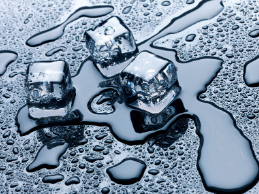
As the weather gets chillier, embrace the cold with some frozen science experiments! Check out two science experiments here, then glance through our booklist for even more ideas.
What Makes Ice Melt?
Throughout the winter, many families throw salt onto their walkways to melt built-up ice. But is salt really the fastest way to do this? Why not try out other substances and, while you’re at it, make a chart of your findings.
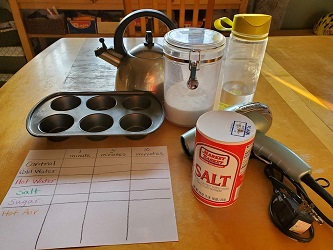
You’ll need ice cubes, a muffin tin and anything your kids think might help melt the ice. Have them explore the house with you to find things to try. You could experiment with other cooking ingredients (salt, sugar, baking soda, flour), various temperatures of water, and hot air with a hair dryer.
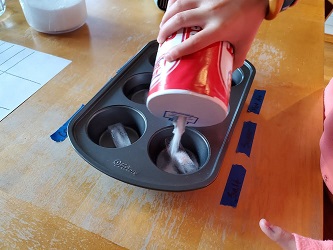
Place one ice cube in each cup of your muffin tin. Then try a different melting method for each ice cube. Make sure you leave one ice cube alone to just melt on it’s own. That’s your “control group,” or the cup you compare all the other ice cubes to in order to see if your added substances speed up, slow down, or have no effect on melting speed.
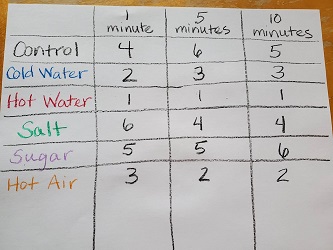
If you want to, record your data on a chart. You can record each material, and you can check how much the ice has melted in comparison to the control ice. Here we ranked each cup from 1-6, with 1 being the most melted.
This next experiment includes some preparation beforehand. You have probably done baking soda and vinegar volcanoes before, but have you ever tried them frozen? You’ll need: a freezer-safe cup or bowl, a golf ball, saran wrap, water, baking soda, and vinegar.
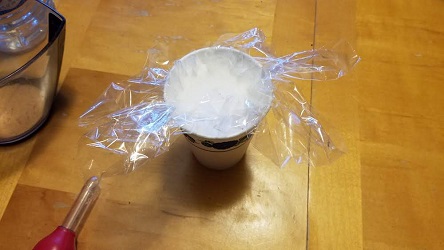
The day before you want to do your experiment, create your frozen volcano. Place a golf ball (or any small ball that won’t float) in the bottom of a cup or small bowl and cover with saran wrap. Press the saran wrap down to the bottom of the bowl around the ball. In a separate container, mix together baking soda and water, and be generous with the baking soda. I used about 1 part baking soda to 3 parts water. Pour the baking soda water into the container with the ball and freeze until solid, I left it overnight. Before you’re quite ready to do the experiment, take the frozen cup out of the freezer and let it sit for a little while, maybe 10-15 minutes. Then tip it into a container and remove the cup, ball, and saran wrap. This might be difficult at first (and I didn’t get every scrap of saran wrap off) but will be easier as the outer layers of the ice thaw a little bit.
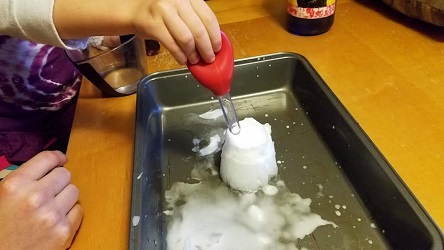
Now your experiment begins! Ask your child to predict what they think will happen. Will the baking soda and vinegar still create a foamy reaction when they’re frozen? Let your child drop vinegar onto their frozen volcano and see what happens. You can also add in food coloring, either when you’re making the frozen volcano, or add drops into the mouth of your volcano and see what happens.
Looking for more sciency ideas to keep you busy on these chilly days? Check out our booklist!
Skip to End of Carousel